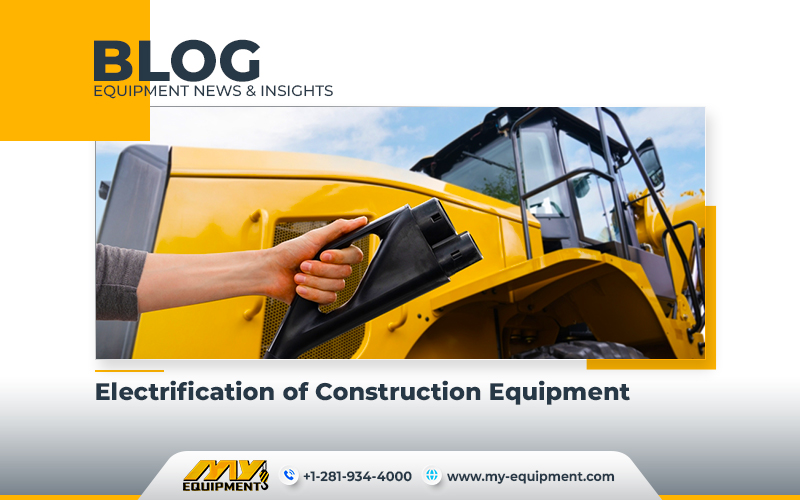The construction industry is undergoing a significant transformation as it rapidly embraces electric alternatives in response to higher pollution standards and soaring fuel prices. According to industry experts, by 2025, most heavy equipment is expected to transition from diesel to electric or hybrid powertrains. This trend is predicted to gain momentum in the coming years, driven by international regulatory pressures, the growth of suppliers and services meeting the rising demand for electric construction equipment, and advancements in technology empowering original equipment manufacturers (OEMs) with viable options.
Stringent Pollution Regulations Driving Change
Governments and regulatory organizations worldwide are implementing stricter pollution restrictions for off-road diesel engines. The introduction of initiatives like the European (EU) Stage V Emission Regulations and China VI Emission Standard exemplify international efforts to reduce exhaust emissions from non-road mobile machinery. Furthermore, many governments are establishing low-noise standards, particularly in residential areas and at the municipal level, in addition to emission regulations.
Rising Fuel Costs and Operating Expenses
The cost of diesel fuel and ongoing operating expenses have propelled the shift towards electric construction equipment. As fuel prices remain high, construction companies find it increasingly challenging to employ diesel-powered equipment. Electric alternatives, with their reduced energy consumption and lower operating expenses, offer a more practical and economical solution for OEMs seeking cost-cutting measures while maintaining competitiveness.
Advancements in Technology and Cost-Effectiveness
The construction equipment market is witnessing a trend towards electrification driven by the growing supply and demand as well as technological advancements. Electric construction equipment offers clear advantages, and as the technology becomes more widespread, it becomes a more appealing option for construction companies. The cost-effectiveness of electrification, coupled with the rise in fuel prices and high expenses associated with diesel-powered equipment, further reinforces the viability of electric alternatives.
Evolving Supplier Landscape
As the construction industry embraces electrified equipment, the suppliers and dealers serving this sector are expanding and evolving. Companies are developing and manufacturing a broader range of components and software to meet the growing demand for electric construction equipment and environmentally friendly solutions. This shift also poses challenges for manufacturers of conventional internal combustion engine (ICE) parts, who face disruption as electric vehicles become more prevalent in the market.
Adaptation of Dealer Operating Models
Dealers operating in the construction industry must adapt their product and service offerings to accommodate electric construction equipment (ECE). ECE has fewer parts and requires different maintenance compared to ICE equipment. Dealers will need to provide services such as battery support, vehicle charging, and other specialized maintenance requirements associated with electric alternatives.
The electrification of construction equipment represents a sustainable shift in the industry, driven by factors such as stringent pollution regulations, rising fuel costs, and the cost-effectiveness of electric alternatives. As governments worldwide enforce pollution rules and encourage clean energy adoption, the trend towards battery-powered construction equipment is expected to intensify. This transition brings about changes in supplier landscapes and dealer operating models, fostering the development of environmentally friendly and economically viable solutions for the construction industry.


 1400 Broadfield Blvd, Houston, TX 77084,
USA.
1400 Broadfield Blvd, Houston, TX 77084,
USA.